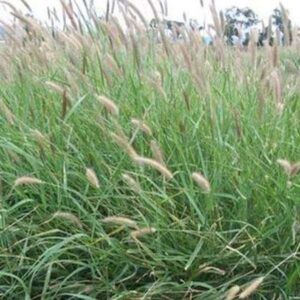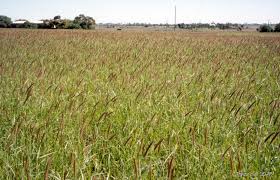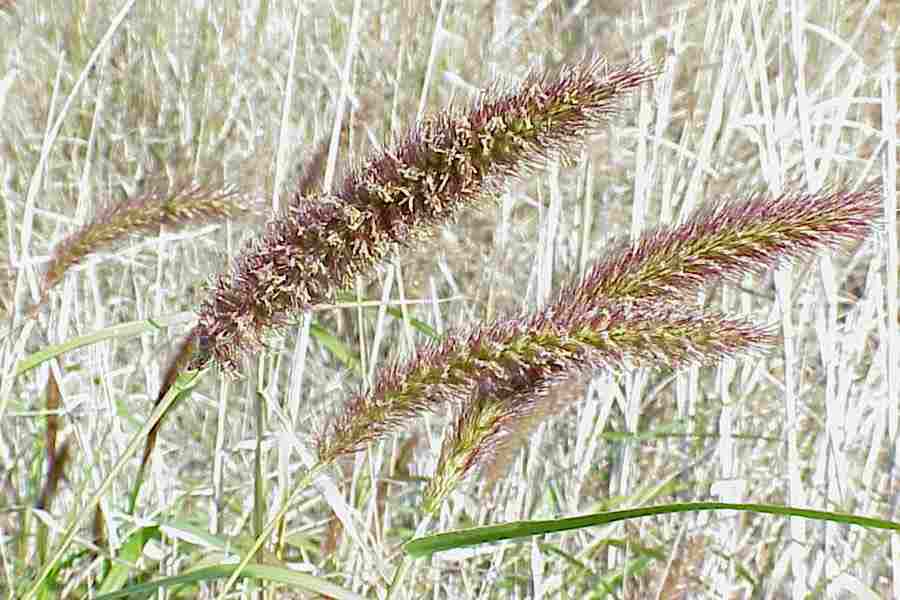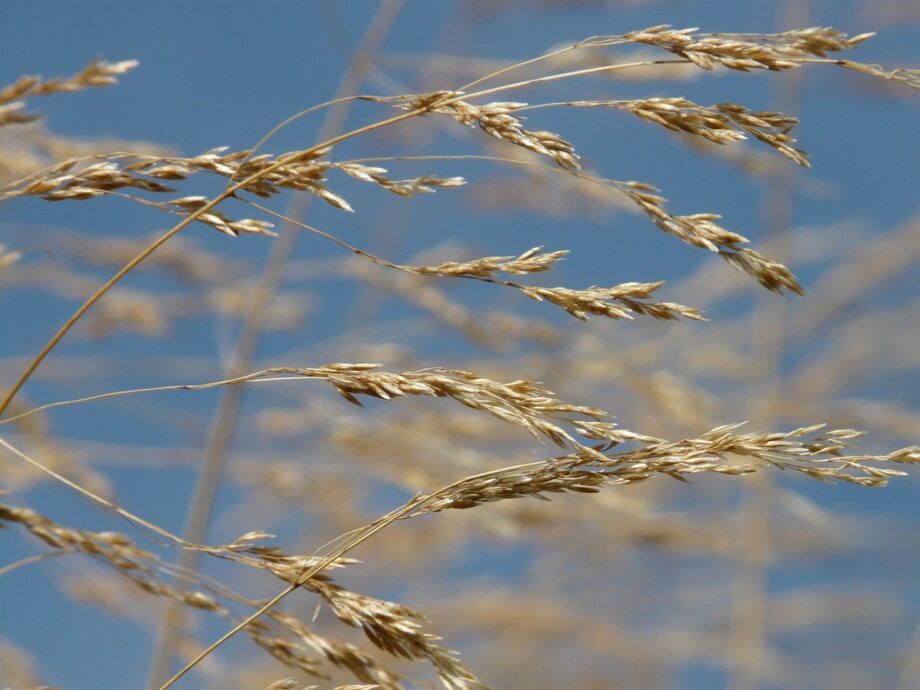Cenchrus ciliaris L. Other names: foxtail buffalo grass (Eng.); bloubuffelgras (Afr.)
Cenchrus ciliaris, commonly known as buffelgrass or African foxtail grass, is a warm-season perennial grass that is native to Africa and is widely distributed throughout the arid and semi-arid regions of the world.
Buffelgrass is a highly valued forage grass due to its ability to grow in harsh environments and provide a reliable source of food for livestock.

Buffelgrass grows well in areas with an annual rainfall of 250 to 500 mm and is highly adapted to hot and dry conditions. It has a deep root system that enables it to extract water and nutrients from deep within the soil.
The grass grows in a tufted fashion, with culms reaching up to 1.2 meters in height. The leaves are narrow, long, and spiky, with a bluish-green coloration.
Cenchrus ciliaris is highly valued as a forage crop due to its high yield potential, drought tolerance, and nutritive value.
The grass is highly palatable to livestock and has high crude protein and digestibility values. It is also highly tolerant to grazing and trampling, making it an ideal forage grass for extensive livestock production systems.
Cenchrus Ciliaris Uses
- Forage Crop: Buffelgrass is highly valued as a forage crop due to its high yield potential, drought tolerance, and nutritive value. It is a preferred forage crop for livestock, particularly in arid and semi-arid regions, as it provides a reliable source of food even during periods of low rainfall.
- Erosion Control: Buffelgrass is used for soil stabilization and erosion control due to its deep root system, which helps to anchor the soil and prevent it from washing away. It is often used in revegetation projects in areas that have been degraded or eroded.
- Land Reclamation: Buffelgrass is used for land reclamation in areas that have been damaged by human activities, such as mining or construction. It helps to restore the soil structure, improve fertility, and increase biodiversity.
- Landscaping: Buffelgrass is used as a landscaping grass in arid regions due to its tolerance to drought and low maintenance requirements. It is also a preferred grass for golf courses and parks in these regions.
- Fuel: Buffelgrass is used as a fuel source in some regions, particularly in Africa. The grass is harvested and dried and then used as fuel for cooking and heating.
- Traditional Medicine: Buffelgrass is used in traditional medicine in some regions of the world to treat various ailments, including fever, stomachache, and diarrhea.
Despite its many benefits, buffelgrass also has some drawbacks. It is an invasive species in some regions of the world, including the United States, where it has become a significant threat to native ecosystems.
Cenchrus ciliaris can outcompete native plant species, alter fire regimes, and reduce biodiversity. As a result, it is important to carefully manage the buffelgrass population to prevent it from becoming an invasive species.
Cenchrus Ciliaris Seeds
Buffelgrass is propagated through seeds, which can be obtained from various sources.

Here are some key facts about Cenchrus ciliaris seeds:
- Germination: Buffelgrass seeds have high germination rates and can germinate in a wide range of soil temperatures (from 15 to 45°C). Optimal germination occurs at soil temperatures between 25 and 35°C.
- Seed Production: Buffelgrass seeds are produced in large quantities, with a single plant producing up to 20,000 seeds per year. Seed production can be influenced by factors such as soil fertility, water availability, and grazing pressure.
- Seed Collection: Buffelgrass seeds can be collected from mature plants in the field, usually in the dry season when the seed heads have matured and turned brown. The seeds can be collected by hand or by using mechanical harvesters.
- Seed Storage: Buffelgrass seeds have a relatively short storage life and should be stored in a cool, dry place to maintain their viability. Seed viability can be maintained for up to two years under proper storage conditions.
- Seed Treatment: Buffelgrass seeds can be treated with fungicides and insecticides to protect them from fungal and insect damage. Scarification and stratification treatments can also be used to improve germination rates.
- Seed Sowing: Buffelgrass seeds can be sown by broadcasting or drilling, depending on the planting density required. The seeds should be sown at a depth of 1-2 cm in a well-prepared seedbed and covered lightly with soil.
Where To Buy Cenchrus Ciliaris Seeds

Cenchrus ciliaris seeds can be purchased from various sources, including online seed stores, agricultural supply stores, and seed distributors.
When purchasing Cenchrus ciliaris seeds, it is important to ensure that the seeds are of high quality and have been tested for purity and germination rates.
It is also important to consider factors such as the intended use, soil and climate conditions, and planting density when selecting the appropriate seed variety.




